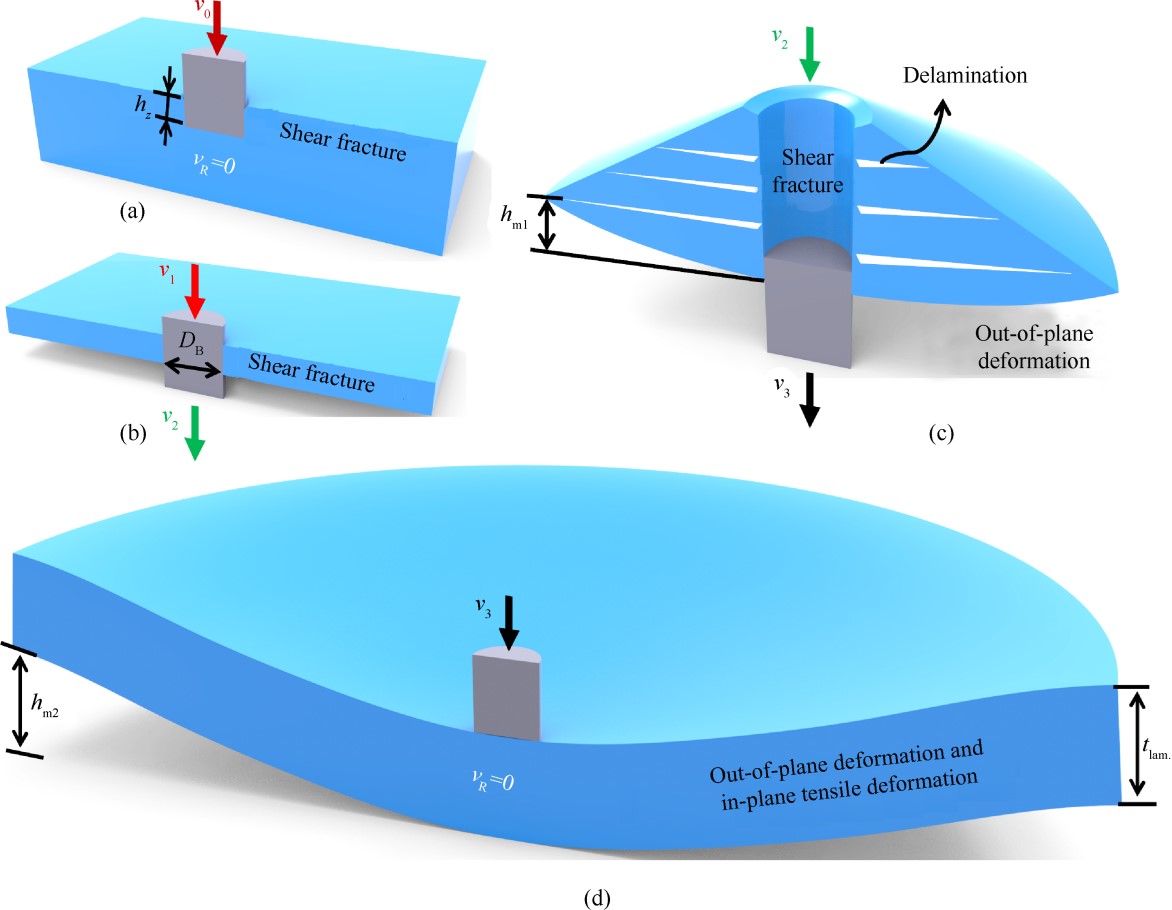Ballistic response mechanism and resistance-driven evaluation method of UHMWPE composite
Published 26 May, 2025
Composites of ultra-high molecular weight polyethylene (UHMWPE) are widely used in various fields requiring ballistic protection due to their lightweight and high-strength. However, the theoretical developments in ballistic response in case of UHMWPE composite have not kept pace with its applications in practical engineering. This makes it difficult to provide insightful guidance for the design optimization of protective structures.In a study published in Defence Technology, a research team from China provided a novel method for regulating and evaluating the bulletproof performance of protective composites.
"We explored the ballistic response mechanism of UHMWPE laminate by coupling the results of impact test and simulation analysis," explains Prof. Yanan Jiao, from Tiangong University. "and proposed the quantitative indicators of bulletproof performance of laminate, controlled by the accompanying response mechanism. Furthermore, we developed a novel performance evaluation model to predict the bulletproof performance of the laminate. "
The research team conducted systematic experiments with various projectile types and velocities impacting UHMWPE laminates of different thicknesses. Their work revealed that the material's ballistic performance stems from three fundamental response modes: local deformation, structural vibration, and their coupling effects. This discovery explains why UHMWPE demonstrates such remarkable energy absorption capabilities.
More importantly, the researchers developed a predictive model based on cavity expansion theory that focuses on projectile deceleration rather than complex material states. "Our approach achieves over 89% accuracy in performance prediction," notes Prof. Hongshuai Lei, from Beijing Institute of Technology. "This is a game-changer for armor design, as it eliminates the need for countless expensive ballistic tests during development."
According to Dr. Qing Zhou, from Beijing Protech New Material Science Co., Ltd., this work represents a major step forward in protective materials science. "For the first time, we have both a comprehensive understanding of UHMWPE's impact response and a practical tool for performance prediction. This will significantly accelerate the development of next-generation lightweight armor systems."
They believe this The proposed response mechanism can also be applied to explain the ballistic responses of other high-performance fiber composites with different reinforced structure. At this point, the occurrence ratio of aforementioned three fundamental response modes more significantly could rely on the fiber type and the reinforced structure. These exploration works will be carried out gradually in the future.
The team published their study in the KeAI journal Defence Technology.

Contact author details: Hongshuai Lei, Beijing Key Laboratory of Lightweight Multi-functional Composite Materials and Structures, Beijing Institute of Technology, Beijing 100081, China. leihongshuai@pku.edu.cn
Funder: This work was supported by the National Key Research and Development of China (Grant No. 2022YFB4601901) and the National Natural Science Foundation of China (Grant No. 12122202).
Conflict of interest: The authors declare that they have no known competing financial interests or personal relationships that could have appeared to influence the work reported in this paper.
See the article: Yemao He, Johnny Qing Zhou, Yanan Jiao, Hongshuai Lei, Zeang Zhao, Daining Fang, Ballistic response mechanism and resistance-driven evaluation method of UHMWPE composite, Defence Technology, Volume 44, 2025, Pages 1-16, https://doi.org/10.1016/j.dt.2024.06.007